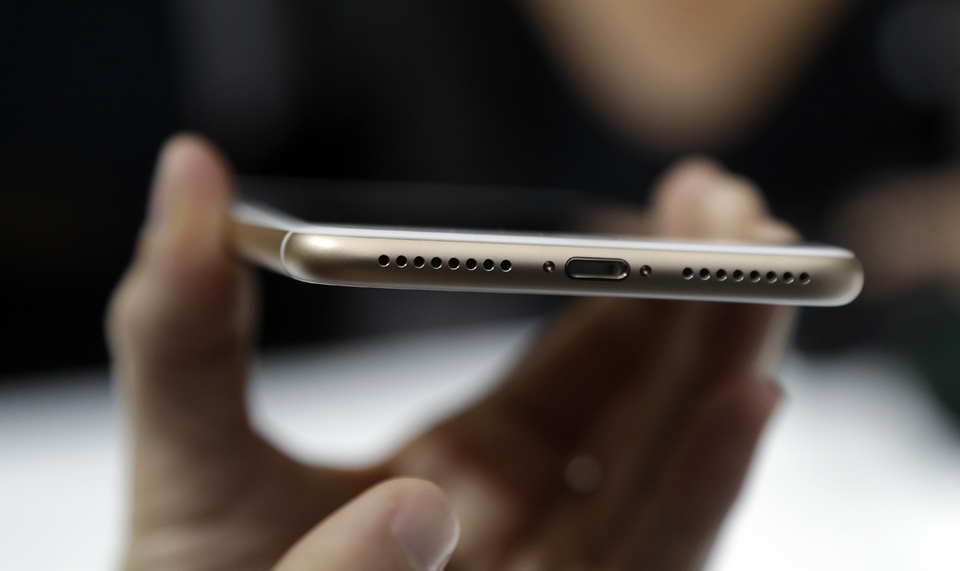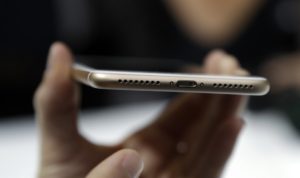

By: Ollie Gratzinger | Staff Columnist
Since its initial release in 2007, Apple’s iPhone has been one of the front-runners in smartphone technology. The company has been spitting out a new device once a year with few exceptions, each promising to be bigger, better and smarter than the last.
With the release of the iPhone 7 on the horizon, Apple fans and critics alike are buzzing with excitement. There’s a question looming overhead, begging to know how much more can possibly be done to a phone before it either takes over the world or takes a step backward, away from the progress associated with the Apple logo.
So with that being said, what’s in the box?
Not only does the iPhone 7 claim to be waterproof (though I still wouldn’t recommend a dip in the toilet or swimming pool), but a quick scroll through Apple’s website shows that it comes equipped with a display 25 percent brighter than that of its predecessor, the iPhone 6. It’s supposedly twice as fast on Wi-Fi and three times as fast on LTE, too, boasting a battery life up to two hours longer than any previous model. As if that isn’t enough to sell a die-hard Apple fan, and maybe even turn a few Team Android heads, it comes with a stereo speaker built-in, bringing to the table twice as much sound.
If it sounds too good to be true, that’s probably because it is.
With all of the new features taking up space inside of that sleek and thin device, something had to be sacrificed in the name of progress. That something, though, was the beloved 3.5mm headphone jack.
Instead, the phone will come with a pair of earbuds designed to connect to the charging port, as well as an adapter so that you can still use your favorite pair of dollar-store headphones with your new tech.
Marketing chief of Apple, Philip W. Schiller, claimed that the move away from the most widely used device feature took “courage,” and while such a statement might seem to some like a bold declaration of innovation, others might see it as a blunt-force inconvenience. The lightning port headphones make it impossible to charge your phone and listen to music at the same time, unless you feel like shelling out extra cash for a bulky set of Bluetooth headphones.
There’s a solution, but it’s pricey, too. Coming in October are the AirPods, a pair of tiny wireless earbuds designed by Apple specifically to follow the iPhone 7 release. They sell for a steep $159 and come with a charging case that can keep them powered for about 24 hours. Small and wireless, it’s hard not to wonder if the AirPods are the forefront of future innovation or just something else to lose.
Our options are limited; do we buy, or more aptly, invest in the iPhone 7 with extra features and expenses alike, or do we wait out the storm and let our tech-savvy friends take the fall?
Freshman Nathaneal Roberts is a self-proclaimed Apple devotee, and he says that the missing headphone jack isn’t really much of a problem.
“They still include an adapter so you can use your own headphones,” Roberts said. “Plus, the increased battery life would help.”
In regard to what he didn’t like from Apple’s latest release, he said, “The [new] jet black phone collects a lot of fingerprints and scratches easily, so I just wouldn’t go for that color.”
Despite his interest in the iPhone 7, he said he has no plans on purchasing the additional AirPods.
“They look like regular headphones with the wires cut off,” Roberts said.
Apple fans around the globe are gearing up for the excitement of welcoming the iPhone 7 into the wonderful world of tech. With each new product, there’s bound to be a thinly veiled layer of apprehension surrounding the notion of something new. After all, Apple didn’t get its reputation by sticking to convention. Whether you love it, hate it, love to hate it or hate to love it, there’s no denying the fact that Apple’s innovation took courage. It was a big step, whether it was a step toward the future or a step off the edge.
For some, though, it might take just as much courage to take that step and make the purchase.
Freshman Dominic Ceccarelli plans to let others test the waters before jumping in himself.
“I would wait until the market conforms to the idea of wireless headphones before investing in it,” Ceccarelli said. “The headphone jack is dying, not because its time is up, but because Apple is leaving it behind.”
I think it’s fair to say that the tech giant will continue to be one of the dominant entities in the smartphone industry, at least until something bigger, better and smarter comes along. For now, though, the world will watch and learn from Apple that it isn’t necessarily about what you do, but rather how you do it and with what degree of conviction.




